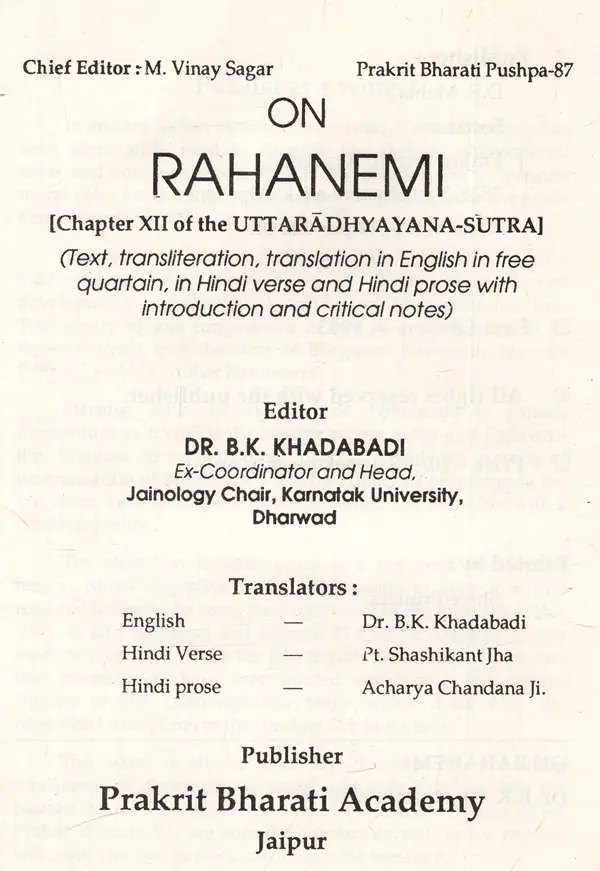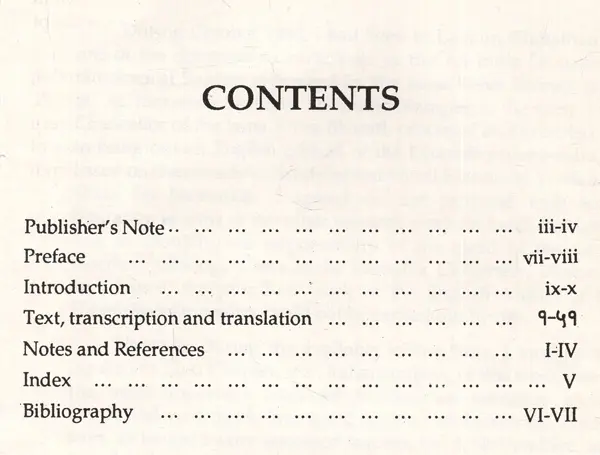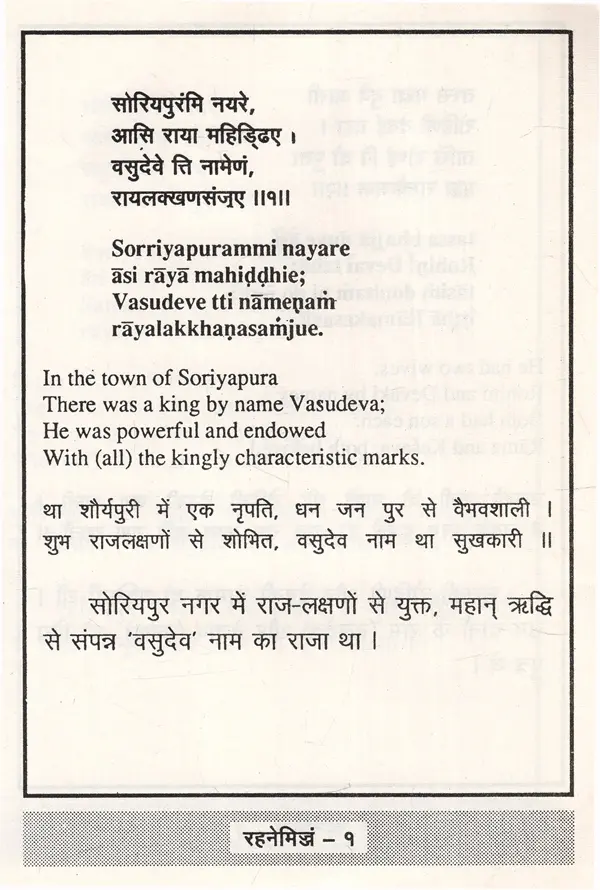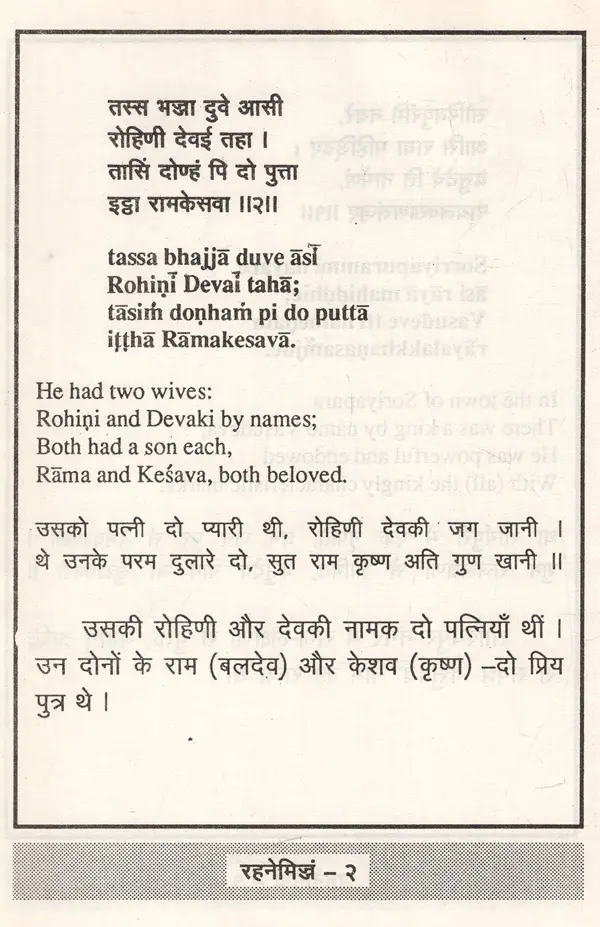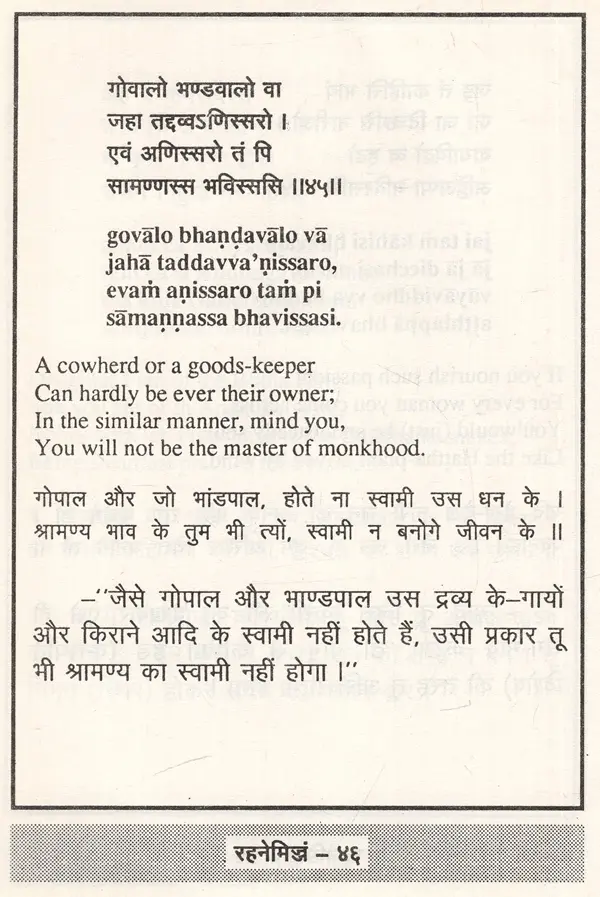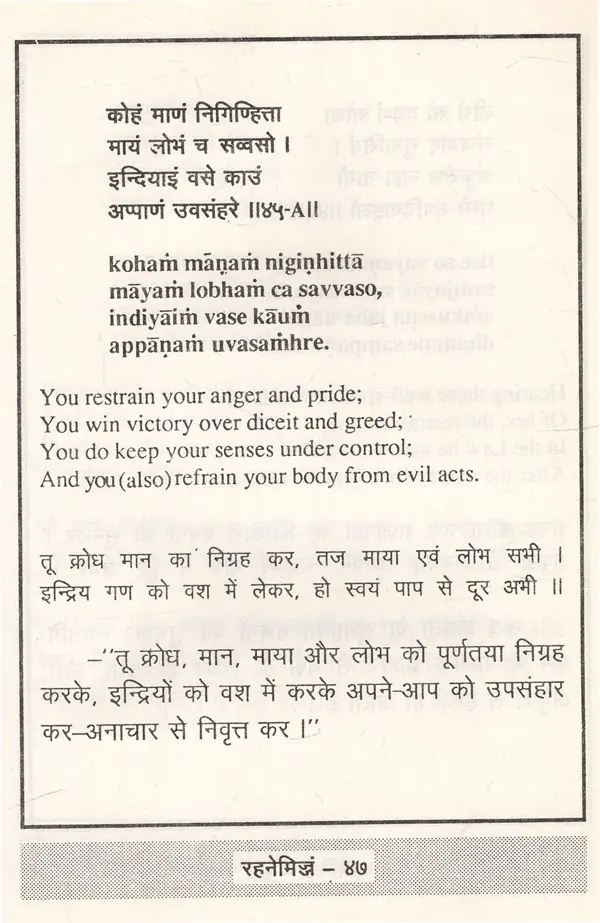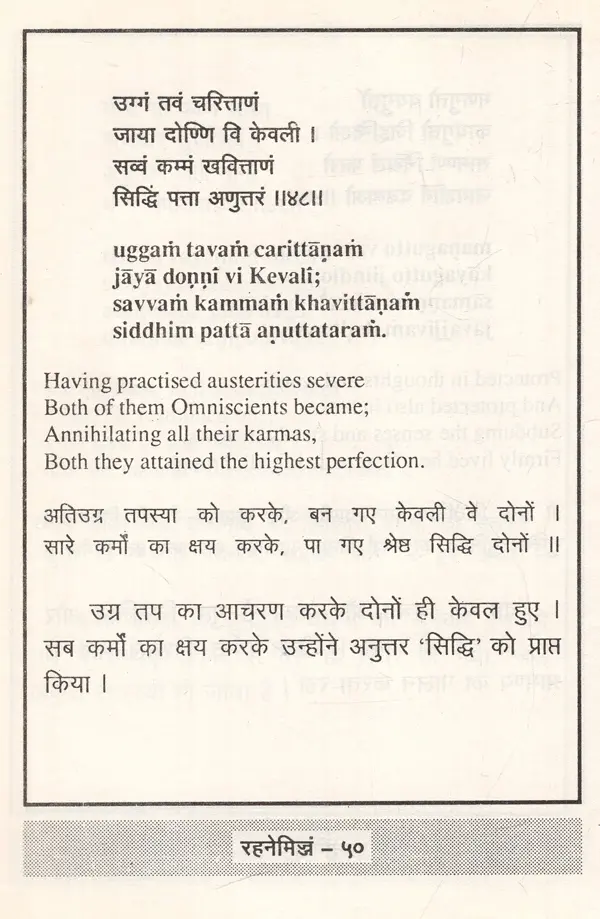
On Rahanemi (Chapter XII of the Uttaradhyayana-Sutra) (An Old And Rare Book)
Book Specification
| Item Code: | UBB656 |
| Author: | B.K. Khadabadi |
| Publisher: | Prakrit Bharati Academy, Jaipur |
| Language: | Prakrit Text with Transliteration and English Hindi Translation |
| Edition: | 1993 |
| Pages: | 58 |
| Cover: | PAPERBACK |
| Other Details | 7.00 X 5.00 inch |
| Weight | 60 gm |
Book Description
During October 1980, I had been to Ladnun (Rajasthan) as one of the delegates to participate in the All India Seminar on Jainological Studies organized by the Jaina Viśva Bharati, there at. At that time Shriman Shrichand Rampuria, the then Vice- Chancellor of the Jaina Viiva Bharati, proposed and exhorted me to bring out an English edition of the Uttaradhyayana-sutra, as based on the already critically edited Hindi Edition by Yuvacarya Muni Sri Nathmalji. I agreed on the proposal with some hesitation in view of my other research work on hand. But later I had to shoulder the responsibility of the Head of the newly incepted Jainology Chair at the Karnatak University, Dharwad, and, hence, the promised work of the English edition of the Uttaradhyayana-sutra could not be carried out by me.
However during the available leisure time, I took up the significant 22nd Chapter, viz., Rahanemijjar, of this work, one of the most important Jaina religio-historical narrative pieces, which had very much impressed on my mind since my college days, as taught by my esteemed teacher, Dr. A.N. Upadhye, and completed it, as if to defend my earlier promise representatively, in the form as it appears today.
The Uttarajjhayana (the Uttaradhyayana- sutra) is generally accepted as the first of the four Mulasūtras' of the Ardhamagadhi canon. It is one of the most valuable constituents of this canon from the points of view of its language, religio-historical contents, dogmatical deliberations and narrative wealth. It is rightly called one of the four Seniors of the Canon². Of the four various views on why this work is called Mulasutra, the one presented by Prof. Hermann Jacobi, that it aims at instructing the young monk in his basic requirements etc., seems to be the most convincing. This work, consisting of 36 chapters of varied length, is a product of multiple authorship. It can be called a compilation of various texts cast into Lectures or Chapters on religious legends, moral edifications, rules of monastic discipline and dogmatical matters which are so useful for the young manks.
Examples of ancient legendary heroes and semi-historical personages have often been used by the Jaina seers and teachers for illustrating effectively the rules of religious faith, the hard path of monastic life and the resultant final beatitude etc. Chapters dealing with religious legends in this Mulasutra serve this purpose very well. According to Prof. Jarl Charpentier, "Chapters treating of legendary matters, to which close parallels are found in other literature, are the very oldest texts incorporated in the Uttarajjhayana." Prof. Winternitz calls such chapters (including Ch. XXII on Rahanemi) "the oldest nucleus" of this Mulasutra," which, hence, may be said to belong to the period between 300 B.C. to 200 A.D.
